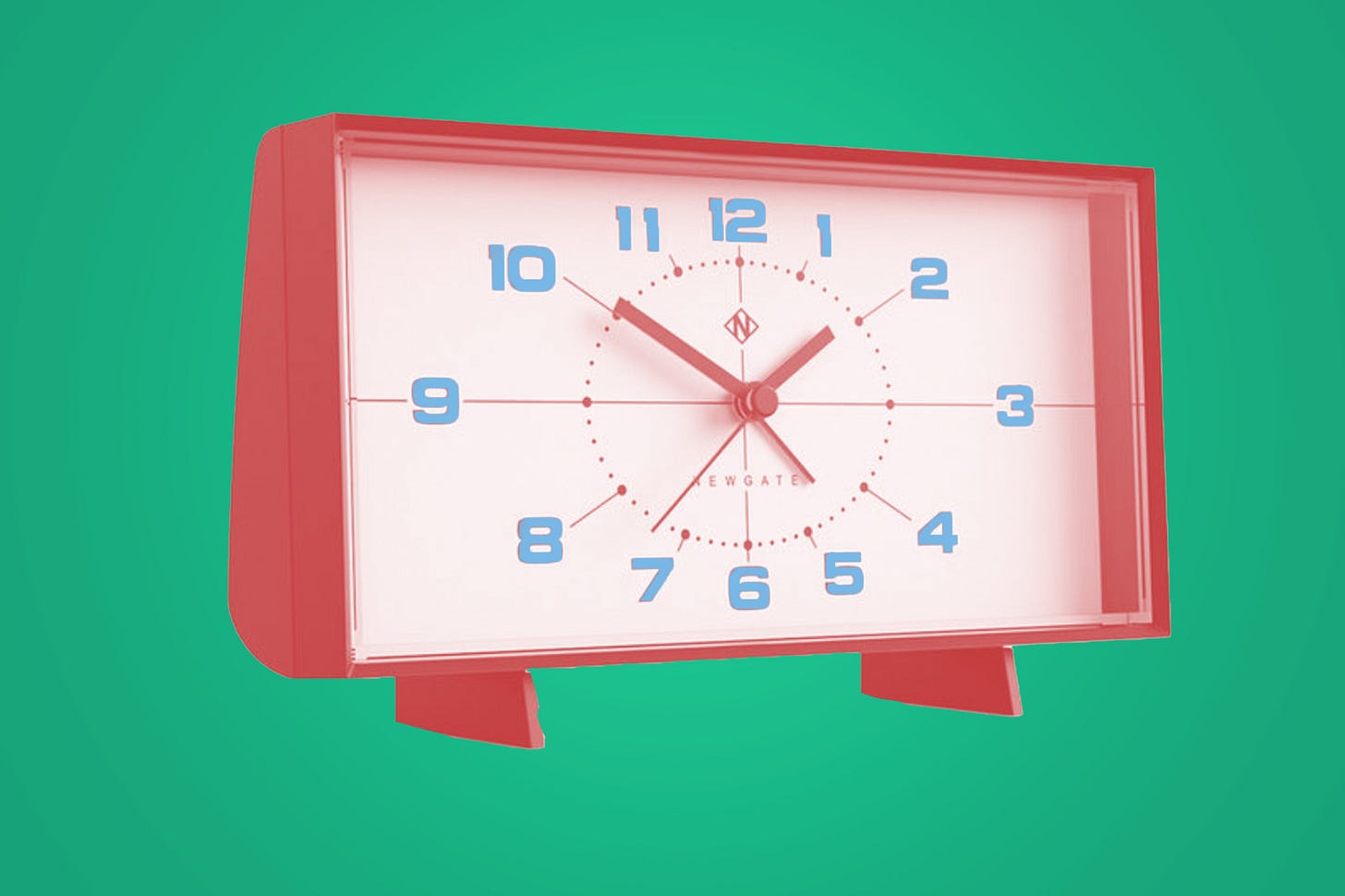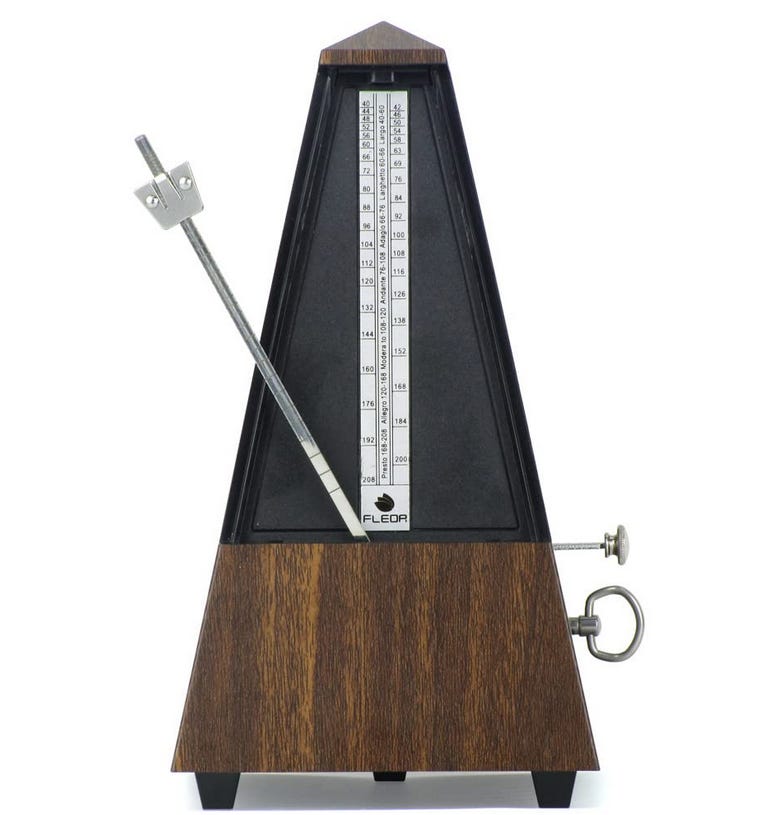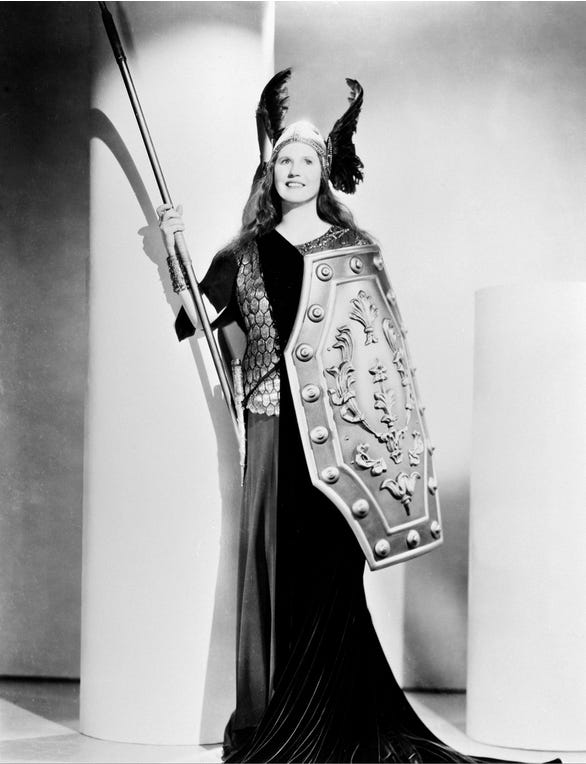This week’s newsletter comes from a slightly strange habit I’ve developed: checking the sunset time every single day.
It’s not like I do anything with that information, I just like to know. Around December 21st I start watching the numbers shift, minute by minute, as the days stretch out again. It feels hopeful. But then, by August, there’s that familiar sense of dread as the light begins to shrink, like something is gently winding down. I get this small pang of disappointment, even though I knew it was coming. And somehow, every year, I go through the exact same cycle of excitement and mild doom.
I think that’s what got me thinking about time - how we mark it, how we feel it passing, and how it sneaks up on us in quiet, almost imperceptible ways.
It turns out composers were just as obsessed. Some of them tackled time directly with ticking clocks and steady pulses. Others were more abstract, capturing the stretch and suspension of time, or the way it bends with memory and feeling. Some wrote music that mimics a metronome; others created sound worlds where time seems to stop altogether.
So this week’s playlist is a kind of Saturday morning reflection on time - music that ticks along, plays with the rhythm, stretches moments out, and eventually lets go.
Symphony No. 101 ‘The Clock’, 2nd Movement - J. Haydn
Let’s start with one of the most literal takes on time in classical music.
Haydn’s 101st symphony (he wrote 106, by the way) is nicknamed The Clock because of its second movement. It’s that plucking of the strings and the bassoon that give it this steady, ticking feel - like some giant musical grandfather clock.
The violin melody, though, feels more like a comedic prank. OK, it’s not a LOL sort of funny, but there’s this Bugs Bunny kind of humor in it - sneaky, slightly off-kilter. There’s also a pretty abrupt change in dynamics that adds to the surprise.
But don’t be fooled: Haydn knew exactly what he was doing. The London audience of 1794 loved it. This symphony is part of the twelve “London Symphonies” he wrote either during his visit to the city or for premieres there. One review from the time raved:
“As usual the most delicious part of the entertainment was a new grand overture [symphony] by HAYDN; the inexhaustible, the wonderful, the sublime HAYDN! The first two movements were encored…”
What a review.
I keep going back to the recording by Nikolaus Harnoncourt, a pioneer in this kind of music. The pace is so steady, but somehow still on edge. You feel like something’s about to happen, there’s this slight sense of anticipation, but what exactly? It never quite arrives. It’s genius.
Waltz no. 6 ‘Minute Waltz’ - F. Chopin
This is truly a case of mistaken translation. Chopin’s famous swirly Minute Waltz wasn’t meant to be played in under a minute. It comes from the French word minute (pronounced mee-NOOT), meaning “small.”
So no, it’s not a one-minute sprint, though some pianists have tried (I found a version clocking in just under a minute, but by that point it’s less music, more time trial). It usually lasts around two minutes, which still makes it a little gem.
The title stuck, but Chopin actually called it Valse du petit chien - “The Waltz of the Little Dog.” He was apparently watching a puppy chase its tail when the idea came to him. It’s kind of wild how something that trivial ended up inspiring a piece that’s lasted for centuries.
Symphony No. 8, Second Movement - Ludwig van Beethoven
From a puppy chasing its tail to something even more precise: the metronome.
Beethoven’s 8th Symphony isn’t as famous as his 5th (ta-ta-ta-taaa) or his 9th (that’s the one with Ode to Joy, you’ll know it when you hear it), but the second movement has a reputation of its own. It’s often thought to be a parody of the newly invented metronome.
If you’re unfamiliar: a metronome is a device musicians use to measure tempo (speed). There’s a little pendulum with a sliding weight. Set it higher and it ticks slower, lower and it ticks faster. In classical music, it’s mostly used in two ways:
To practice keeping a steady beat (no rushing or dragging), and
By composers, to mark tempo at the start of a piece.
So you’ll sometimes see something like:
Which means: play this at 60 beats per minute.
But here’s the thing, music doesn’t really work like that. At least not classical music. Musicians shape phrases by bending time, speeding up a little here, slowing down there. It’s expressive. Following a metronome too strictly can make things sound stiff, mechanical.
And this is where Beethoven gets cheeky. This movement sounds like he’s poking fun at the whole idea of a rigid tempo. He mimics the tick-tick-tick of a metronome, but then toys with it, shifting the beat, playing with dynamics. It’s funny, mischievous, and has a kind of charm.
Some even think he was inspired by Haydn’s Clock Symphony, and you can definitely hear the connection. Steady pulse, surprise changes, and that same wink in the music.
L’heure Espagnole (The Spanish Hour)- M. Ravel
Imagine this: you’re in a small Spanish town, it’s hot and dusty, and time has sort of… stopped. Well, your clock has stopped. So you head off in search of a clockmaker, and come across a strange sign over a dark little shop: Torquemada. You walk in. It’s all wood panelling and dim light, and the overwhelming sound of ticking clocks. You’re in the right place.
This is where Ravel’s one-act opera L’heure Espagnole begins. Though calling it an opera is a bit of a stretch, Ravel himself called it a comédie musicale, or musical comedy.
What’s so funny about it? Well, it all takes place in that clockmaker’s shop. While Torquemada is out tending to the town’s clocks (we’re in Toledo, btw), his wife Concepción is back at the shop, juggling several lovers… who keep ending up stuck inside the clocks. It’s pure farce, full of sexual frustration, slapstick, and a very French sort of surrealism. Concepción just wants to get laid.
Unless you’ve worked on L’heure espagnole or you’re a Ravel obsessive, you probably couldn’t hum a single tune from it, even most opera fans can’t. But that’s the point. It’s not really about big melodies. Ravel even said the roles “will give, I think, the impression of being spoken.” The whole thing lasts under an hour, and it pulls you into this weird, wonderful Ravelian world.
The overture, or introduction, is a brilliant way in. You’ve got ticking clocks, strange harmonies, and music that feels dreamy but ever-so-slightly off, like the clocks themselves need winding.
If that’s your kind of mood - slightly surreal, definitely French, with Spanish seasoning and a whole lot of ticking - you might want to give the whole opera a go. But if not, this overture alone is its own little timepiece.
If interested, here’s a slightly outdated production (but with English subtitles) you can get a sense of this piece:
Beim Schlefengehn (‘Going to Sleep’) from Last Four Songs - R. Strauss
Strauss’s Four Last Songs were the last complete works he wrote (aside from one earlier song), and they’ve since become a cornerstone of the classical vocal repertoire. He was 84 when he composed them, and he had a very specific singer in mind: the Norwegian soprano Kirsten Flagstad, basically the blueprint for the horned, dagger-wielding Wagnerian diva.
He died before they premiered, and it was his friend and publisher who grouped the four songs and gave them the title Four Last Songs. All but the first one - Frühling ("Spring") - reflect on death. But not in a fearful way. There’s a calmness in them, a sense of fulfilment and deep peace. You get the feeling Strauss was content with the idea of letting go.
Beim Schlafengehen feels like the emotional heart of the set. It’s built around a poem by Hermann Hesse about letting go of the day and slipping into rest (you can find the text here). The language is simple and gentle, but the music is vast. You feel space open up around you as Strauss uses the orchestra, especially the horns(a Strauss signature to create a sense of space, vastness, and air.
But here’s the thing: the melodies aren’t obvious at first. They’re not instantly memorable. I think you need to listen a few times before you start to hear where the lines are heading, how they stretch and float. But once it clicks, you’ll be hooked. There’s something vast and weightless about the way Strauss writes - and when it lands, it really lands.
I discovered this piece when I was about 19. I remember putting on headphones and listening to it over and over again. I know it by heart now. And still, every time, it feels like time just stops.
That’s it for this week, just a few pieces to help you feel time a little differently.
Have a good weekend! x






